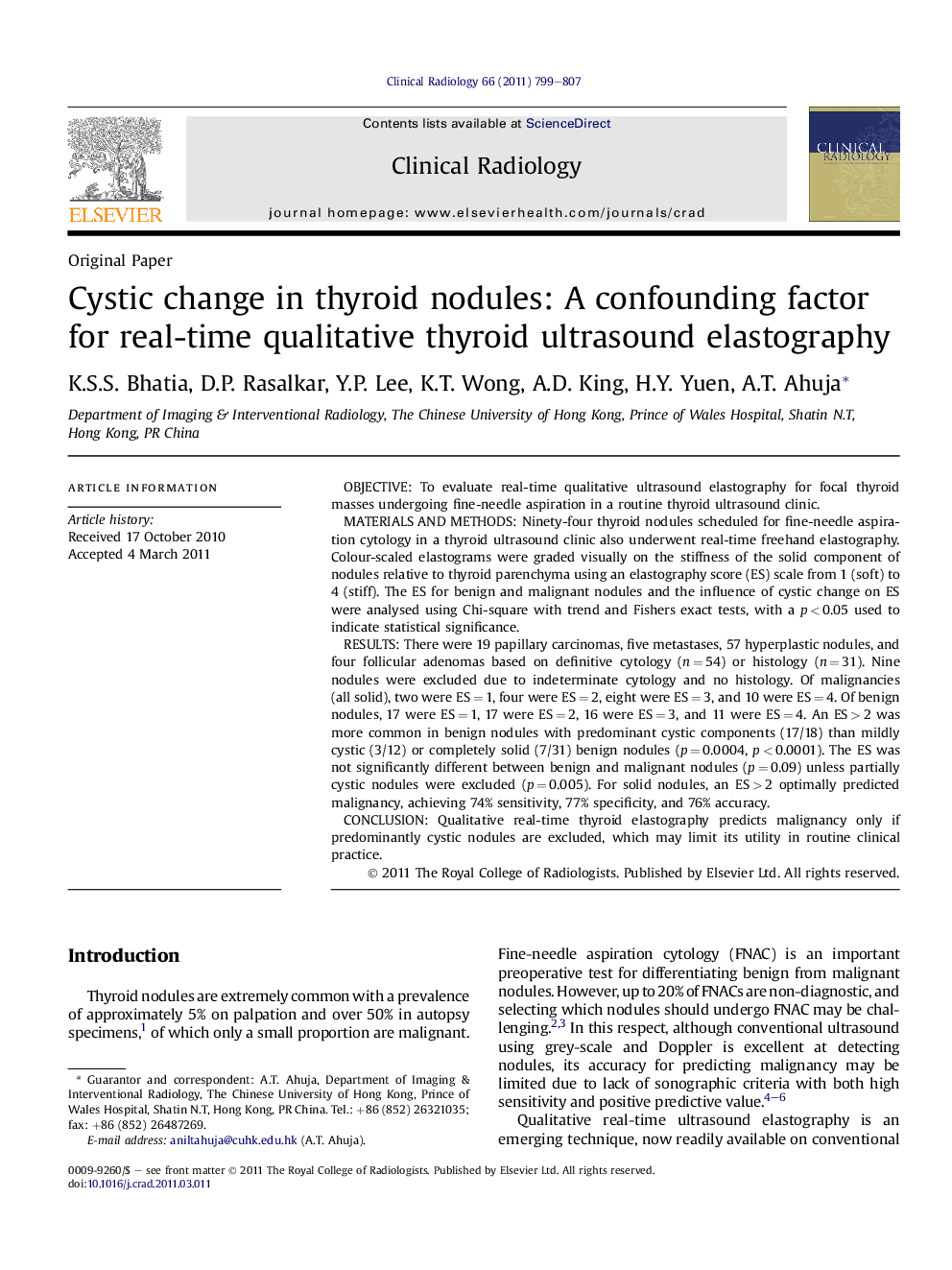| Article ID | Journal | Published Year | Pages | File Type |
|---|---|---|---|---|
| 3982506 | Clinical Radiology | 2011 | 9 Pages |
ObjectiveTo evaluate real-time qualitative ultrasound elastography for focal thyroid masses undergoing fine-needle aspiration in a routine thyroid ultrasound clinic.Materials and methodsNinety-four thyroid nodules scheduled for fine-needle aspiration cytology in a thyroid ultrasound clinic also underwent real-time freehand elastography. Colour-scaled elastograms were graded visually on the stiffness of the solid component of nodules relative to thyroid parenchyma using an elastography score (ES) scale from 1 (soft) to 4 (stiff). The ES for benign and malignant nodules and the influence of cystic change on ES were analysed using Chi-square with trend and Fishers exact tests, with a p < 0.05 used to indicate statistical significance.ResultsThere were 19 papillary carcinomas, five metastases, 57 hyperplastic nodules, and four follicular adenomas based on definitive cytology (n = 54) or histology (n = 31). Nine nodules were excluded due to indeterminate cytology and no histology. Of malignancies (all solid), two were ES = 1, four were ES = 2, eight were ES = 3, and 10 were ES = 4. Of benign nodules, 17 were ES = 1, 17 were ES = 2, 16 were ES = 3, and 11 were ES = 4. An ES > 2 was more common in benign nodules with predominant cystic components (17/18) than mildly cystic (3/12) or completely solid (7/31) benign nodules (p = 0.0004, p < 0.0001). The ES was not significantly different between benign and malignant nodules (p = 0.09) unless partially cystic nodules were excluded (p = 0.005). For solid nodules, an ES > 2 optimally predicted malignancy, achieving 74% sensitivity, 77% specificity, and 76% accuracy.ConclusionQualitative real-time thyroid elastography predicts malignancy only if predominantly cystic nodules are excluded, which may limit its utility in routine clinical practice.
